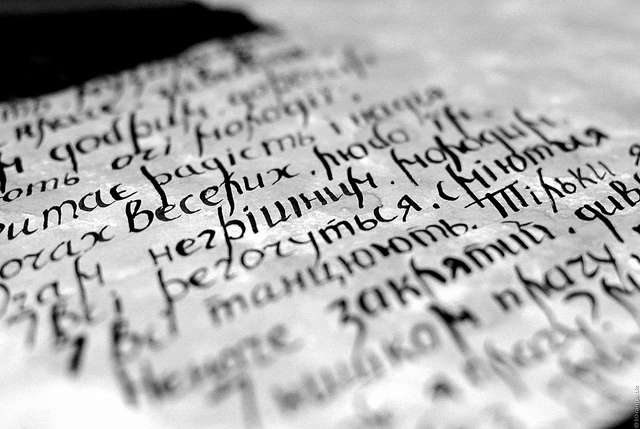Words in poems are like dancers; they have rhythm and movement. When you read the words aloud, the words might flow or bounce or halt based on how the poet arranges them. While this arrangement contributes to a poem’s rhyme scheme and metric pattern, they also contribute to its meaning and tone. By understanding poetry rhyme and meter, you’ll have better insight into what the poet communicates and the emotions expressed.
Poetry Meter
A poem’s metric pattern describes the arrangement of feet in a line. A foot is a group of syllables, the natural breaks in a word. To identify a poem’s meter, you must first identify the feet. Types of feet include:
• Iamb: An unaccented syllable followed by an accented syllable (e.g., the word “destroy”)
• Trochee: An accented syllable followed by an unaccented syllable (e.g., the word “double”)
• Anapest: Two unaccented syllables and an accented syllable (e.g., the word “intervene”)
• Dactyl: An accented syllable followed by two unaccented syllables (e.g., the word “merrily”)
• Spondee: Two consecutive accented syllables (e.g., the word “hum-drum”)
• Pyrrhic: Two consecutive unaccented syllables (e.g., the words “to a”)
Identifying the meter in a poem requires identifying the type of line length, the number of feet in a line:
• Monometer: A line with one foot
• Dimeter: A line with two feet
• Trimeter: A line with three feet
• Tetrameter: A line with four feet
• Pentameter: A line with five feet
• Hexameter: A line with six feet
• Alexandrine meter: A line with six iambic feet
To determine the meter, combine the type of foot with the line length. Iambic pentameter, for examples, is a line with five iambic feet. Identifying a poem’s meter helps determine the type of poem it is, such as a ballad, ode or sonnet. Knowing the poetic type, or form, gives you insight into its purpose and the emotions that the poet may express.
Poetry Rhyme
The rhyme scheme in a poem is another tool used create or identify a poem’s form. The scheme identifies which lines rhyme with each other using letters. Common rhyme schemes include:
• ABAB: The first and third lines rhyme, and the second and fourth lines rhyme
• XAXA: The second and fourth lines rhyme, but the first and third do not
• AABB: The first and second lines rhyme and the third and fourth lines rhyme
• AAAA: All the lines rhyme
• AAXA or AXAA: All but one of the lines rhyme
• ABBA: The first and last lines rhyme and the second and third lines rhyme
• AXXA: The first and last lines rhyme, but the middle lines do not rhyme with each other
Rhyme schemes may incorporate more letters as needed. A Shakespearean sonnet, for instance, uses the following rhyme scheme: ABAB, CDCD, EFEF, GG. The number of letters in each section tells the reader the number of lines in each stanza. In a Shakespearean sonnet, the last stanza has two lines.
Some types of rhyme schemes have formal names, such as:
• ABAB: Alternate rhyme
• AABB…: Couplet
• AAABBB…: Triplet
• AAAA: Monorhyme
• ABABBCBC, ABABBCBC, ABABBCBC, BCBC: Ballad
• ABABB: Cinquian
• AABB: Clerihew
• ABBA: Enclosed
• AABBA: Limerick
• ABABABCC: Ottava rima
• ABABBCC: Rhyme royal
• AABA: Rubaiyat
• ABA, BCB, CDC…: Terza rima
In poetry, the elements within a work contribute to its tone and meaning, making the words multi-faceted. The next time you read a poem, study the rhyme and meter to see what new meanings jump out at you.
[Photo from www.tOrange.biz Valdemar Fishmen via CC License 2.0]

